Although Amazon launched its advertising platform in 2012, it has grown immensely in recent years. In fact, Amazon Advertising has exploded in usage in a short amount of time and has placed itself behind only Google and Facebook for digital advertising market share. As the Amazon marketplace continues to grow, the stakes for understanding, implementing, and executing Amazon PPC strategies in your business have never been higher.
Getting started with Amazon Advertising can be a bit daunting, especially if you’ve never considered adding it to your marketing mix. But there’s no need to worry! In this Amazon PPC guide, we’ll cover the basics of what it is and all the necessary terms and metrics you need to know whether you’re a beginner or advanced seller to help you refine your business strategies. Let’s get started!
What is Amazon PPC Advertising?
Before we get into all of the different terms and metrics, let’s briefly go over what Amazon PPC is exactly. Amazon PPC advertising is a pay-per-click model where sellers pay each time a shopper clicks on their ad in the search results page. The goal of the advertising is to increase product visibility by placing ads within organic search results. By increasing your product’s visibility, you’re also increasing the likelihood that a shopper will discover, click, or purchase your product.
For example, let’s say you sell bluetooth speakers. On the Amazon Advertising platform, you can bid on keywords like “best bluetooth speakers” or “waterproof bluetooth speakers” to increase your product’s visibility on search results pages when shoppers search for these terms. The cost-per-click (CPC) (i.e. how much you pay for each ad click) will depend on how competitive the keywords are. Generally speaking, you should try to generate enough sales from the number of ad clicks you receive to outweigh the advertising cost.
As a seller, it can be overwhelming to keep track of all the different parts and pieces in the Amazon PPC space. If you find yourself needing extra help with generating keyword and search term insights, automating bid adjustments for better ROI, and optimizing campaign performance overall, you should consider using an additional seller tool. For example, AdSprout, our innovative PPC tool provides all these functionalities and even more to help sellers like you succeed in the marketplace!
Amazon PPC Terms with Definitions and Examples
Now that you know what Amazon PPC is, it’s time to learn about all of the different terms and metrics you should know as a seller. There are a good number to know and understand, but you don’t need to have the definitions committed to memory. The more you’re exposed to them as you build your advertising and marketing strategies, you’ll become more familiar with them!
1. Ad Groups
Groups of ads within a campaign targeting a set of keywords or products.
2. Advertising Cost of Sales (ACoS)
The ratio of ad spend to the sales conversion generated from ads. Ideally, you want a lower ACoS since it indicates better performance. You can calculate ACoS by dividing your total ad spend by total sales: Total Ad Spend / Total Sales. For example, if you spend $100 on ads that generated $500 in sales, your ACoS would be 20%. In order to break even for a keyword or campaign, your ACoS would need to be your profit margin or less after all expenses.
3. Advertising Placement
Advertising placement is simply where an advertisement is displayed. On Amazon, ads are commonly shown on mobile and desktop and found at the top of search results, alongside search results, and product display pages.
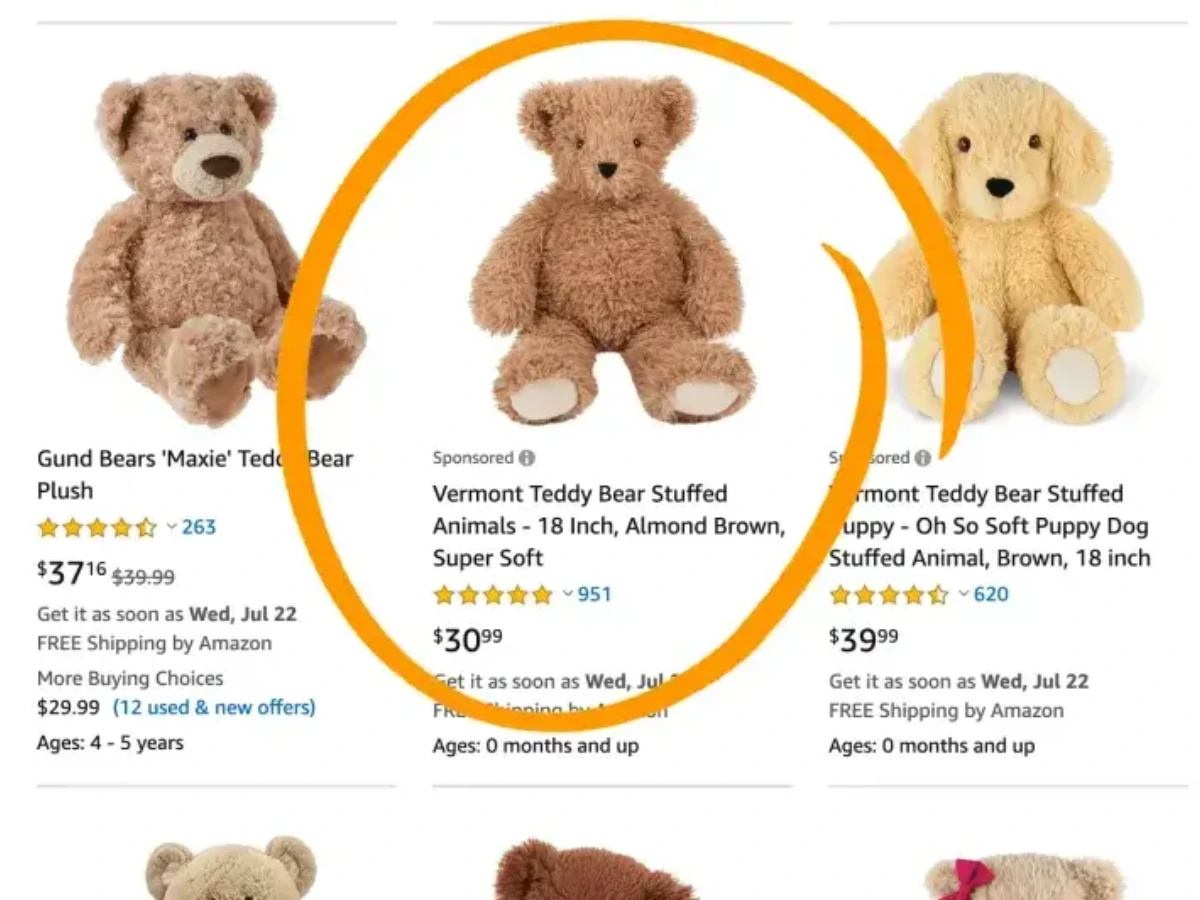
4. Amazon Standard Identification Number (ASIN)
An Amazon ASIN is a 10-letter or number code that is automatically generated and assigned to products sold in the Amazon marketplace. They’re used to differentiate specific products, so every item and product listing has a unique code identifier.
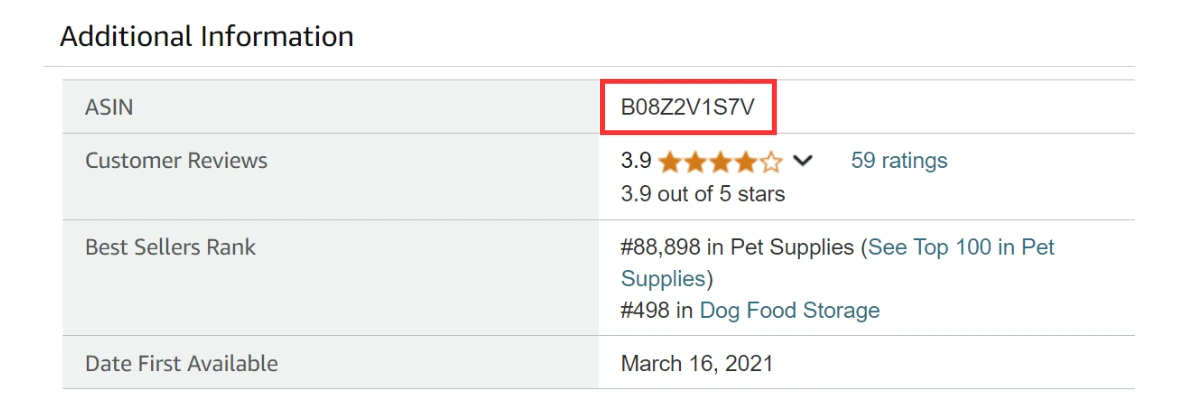
5. Automatic Campaigns
A campaign or targeting type where Amazon decides when and where your ad is displayed. Automatic campaigns are made programmatically, so they take control out of the seller’s hands and can occasionally lead to running ads for odd keywords or unrelated products, which can cause less efficient campaigns. However, they are convenient for their ease of use and the data gathered through Amazon.
6. Average Order Value (AOV)
A key performance indicator (KPI) that measures the average amount of money spent per order on a website. You can calculate your AOV by dividing your total revenue by the number of orders over a specific period of time: Total Revenue / # of Orders. For example, let’s say your business generated $100,000 in revenue from 5,000 orders in a quarter. The AOV for that quarter would therefore be $20.
Including AOV in your KPIs is important because it can help you understand customer purchasing behavior, identify trends, and optimize your sales and marketing strategies. Feel free to check out our article on 10 Proven Strategies to Increase Amazon AOV for some helpful tips!
7. Best Performing ASIN (BPA)
A product (ASIN) that generates the highest sales volume and conversion rate within its product category on Amazon. Additionally, a best performing ASIN will also have a high average star rating, large number of customer reviews, and strong search ranking on the platform.
8. Bid
The amount that an advertiser is willing to pay for each click. On Amazon, sellers can choose between automatic or manual bidding. For automatic bids, Amazon automatically selects keywords for your campaign and determines which search results and product pages your ads will appear on. Automatic bids are ideal for gathering initial data and discovering keywords, but your ads may be displayed for irrelevant search terms. While you can set a campaign budget to control costs, you can’t set maximum bids at the keyword level.
On the other hand, manual bidding allows you to define the keywords and bid rates yourself for a campaign. You have more control to set a maximum ad budget and maximum bid per click at the keyword level. Manual bids are good for optimizing bids on high-performing keywords, but they can be time-consuming for larger campaigns and are more prone to human error.
Check out our article on improving Amazon PPC bid strategies for some helpful tips!
9. Budget
The maximum amount of money that can be spent on a campaign. If you set a daily budget at $25, this means you will not spend more than $25 for the selected day. Learn more about Amazon’s PPC Budget page.
10. Click-through Rate (CTR)
The percentage of ad views that result in clicks. The standard calculation for CTR is: (Clicks / Impressions) x 100. Tracking CTR as part of your metrics is important because it measures ad relevance. Here are six expert insights to drive more clicks and increase your Amazon CTR.
11. Conversions
An action that a customer completes. This term can be used to refer to any number of actions, including a customer clicking “Add to Cart,” completing a purchase, etc. Generally, this measures how many times your ad ended with the desired result.
12. Conversion Rate
The percentage of clicks that lead to a desired action. A higher conversion rate indicates a more effective ad. To calculate your conversion rate, use the following formula: (Total Conversions / Total Clicks or Visits) x 100. For more information on conversion rates, check out our article on 7 Helpful Tips on Increasing Your ECommerce Conversion Rate.
13. Cost Per Acquisition (CPA)
A marketing metric that measures the average cost of acquiring a new customer through a conversion, such as a click, sign-up, or purchase. CPA is important because it helps businesses evaluate the efficiency and cost-effectiveness of their marketing efforts. To calculate CPA, divide your total marketing spend by your total number of conversions: (Total Marketing Spend / Total Conversions) x 100.
14. Cost Per Click (CPC)
The average cost you pay each time someone clicks on your ad. As a whole, CPC can be a mutually beneficial relationship between Amazon and the seller since sellers only pay for ads that receive a click. To determine your CPC, divide the amount of money spent on an ad by the number of clicks it receives: (Total Amount Spent / Total Clicks).
15. Cost Per Lead (CPL)
A marketing metric that measures the average cost of acquiring a new lead or potential customer. While good CPL values vary by industry and channel, it should ideally be lower than the value of a sale. Here’s how to calculate your CPL: Total Amount Spent / Total Leads).
16. Cost Per Thousand Impressions (CPM)
A marketing metric that refers to the amount an advertiser pays for every 1,000 ad impressions (or ad views). Measuring CPM is especially useful for increasing brand awareness, optimizing social campaigns, and delivering specific ad messages. To calculate CPM, use this formula: (Total Ad Spend / Total Ad Impressions) x 1,000.
17. Cost Per 1,000 Viewable Impressions (vCPM)
Viewable Cost Per Mille, or vCPM, is a marketing metric that measures the cost of 1,000 ad impressions that are actually seen by users. Unlike CPM, which counts all impressions whether or not they are viewed by users, vCPM only considers impressions where a significant portion of the ad is visible to users for a specific duration. vCPM helps advertisers optimize their ad spend by allowing them to determine if they’re paying for ads that are actually seen by potential customers. Here is the formula to calculate vCPM: (Total Ad Spend / Total Viewable Ad Impressions) x 1000.
Let’s say that you spent $10,000 in total on an ad campaign which generated 100,000 impressions, with 60% of those impressions being viewable (i.e. were actually viewed by customers rather than just being displayed on the screen). The vCPM would therefore be $16.67.
18. Customer Acquisition Cost (CAC)
A metric that measures how much it costs to acquire a new customer, including all expenses associated with marketing and sales efforts to attract and convert potential customers. The formula to calculate CAC is: Total Sales + Marketing Expenses / # of New Customers.
19. Demand-Side Platform (DSP)
An Amazon software platform that enables advertisers to programmatically buy display, video, and audio ads on and off Amazon.
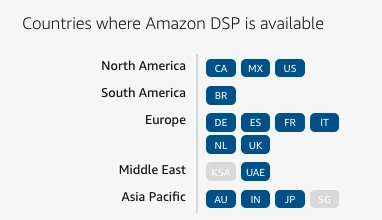
20. Impression
The number of times your ad is shown to or viewed by a potential customer.
21. Keywords
Keywords are words or phrases customers use to search for products. As a seller, you can target certain keywords to show your products in customer searches and detail pages. For example, if you sell yoga mats, you may choose the keyword “best yoga mats” to show your product for. When a shopper searches for a product using the search term “best yoga mats,” your product is eligible to be shown in the search results and detail pages.
For more information on keywords, check out our comprehensive Amazon keyword guide.
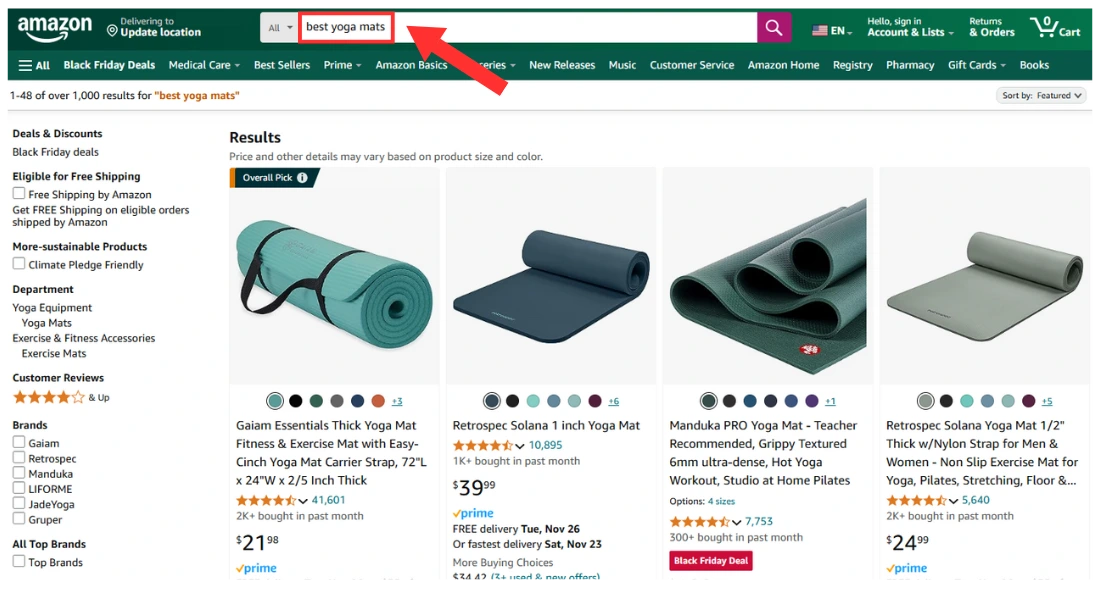
22. Lifetime Value (LTV)
A metric that measures the average revenue a customer will generate throughout the course of their relationship with a business. Knowing this metric can help you allocate budgets more efficiently, identify and prioritize customers, and gauge cost efficiency.
23. Manual Campaigns
The counterpart to automatic campaigns, manual campaigns put more control in the advertiser’s hands. Sellers can choose the keywords to target in their ads according to the Match Types on Amazon. The match types are essentially methods for how to target certain keywords, and map the instances for which the ad is shown; this also gives sellers the ability to restrict ads only for the best buyer audience.
24. Negative Targeting
Keywords or products you don’t want your ads to be shown for. You can change these settings in your Amazon Seller account when you set up PPC ad campaigns.
25. New-to-Brand Metrics
Metrics used to describe customers purchasing your brand or product for the first time on Amazon over the past year. These metrics estimate the cost of engaging new customers on Amazon and identify the most efficient channels and tactics to achieve their campaign goals. They are popularly used in comparison with repeat customers for brands to better understand their customer acquisition vs. customer retention paths.
26. PPC Spend
The total amount of money allocated to advertising efforts on Amazon.
27. Return on Ad Spend (RoAS)
A prominent benchmark across digital advertising, RoAS is the inverse of ACoS. Instead of measuring the cost of a sale, RoAS represents the revenue earned per dollar spent on ads. It’s a helpful metric to evaluate the effectiveness of an ad campaign, ad group, product, or targeting strategy; the higher the RoAS value, the better. To calculate RoAS, you can use this formula: (Ad Revenue / Ad Spend) x 100.
28. Return on Investment (ROI)
A metric that describes profitability, or the amount of money you spend on a campaign or other initiative compared to the amount earned from those efforts. Measuring ROI is important because it helps you assess whether your advertising and marketing efforts are working, where to allocate budget, and what needs to change. Here’s how you can calculate ROI: (Amount Gained – Amount Spent / Amount Spent) x 100.
29. Return on Sales (ROS)
A metric that measures how efficiently you’re converting your sales into profits. In other words, it shows the percentage of each dollar of sales that translates into actual profit. You can calculate your ROS using this formula: (Revenue – Expenses) / Revenue) x 100.
30. Rule-Based Bidding
An advertising strategy where you pre-set rules and conditions to automatically adjust your bids based on certain performance metrics, such as ROAS or conversion rate. This allows you to maintain more control over how your bids change through predefined measures and also yields a specific level of performance for your campaign. For example, let’s say you’re currently bidding on a competitive keyword “best wireless headphones” to show your ad campaign for $0.75. However, your conversion rate is low, so you add in a rule to increase your bid to $0.90 if your conversion rate is lower than a specified amount. Using a strategy like this gives you more control over your ad spend rather than relying on automatic bid strategies to optimize your bids.
31. Search Term Report
A report that shows all the search terms that triggered your ads to appear and be clicked by customers,ultimately leading them to your product. You can also view data about competitor ASINs that lead customers to your product listings, as well as other metrics such as ACoS, 7 Day sales, Orders, RoAS, and more.
32. Stock Keeping Unit (SKU)
A unique alphanumeric code assigned to each product of a seller. It’s primarily used to track inventory levels, sales, and shipments. You can also think of an SKU code as a product identifier within a seller’s inventory management system to help distinguish between different product variations (e.g. size and color).
33. Search Term
Often confused with keywords from a PPC perspective, search terms within Amazon reports (and PPC tools like AdSprout) refer to where your ads appear. In short, keywords refer to the words or phrases that sellers target in their ad campaigns, while search terms refer to the words or phrases that customers type into their search bar, and where your ads appear under.
34. Sponsored Brands Ads
Sponsored Brands ads are a form of banner ads on Amazon that display a brand’s logo, production collection videos, custom tag lines, and other static and video creatives. They typically appear at the top or bottom of the search results page and on product detail pages. The main purpose of this type of ad is to increase brand visibility and product exposure to potential customers.
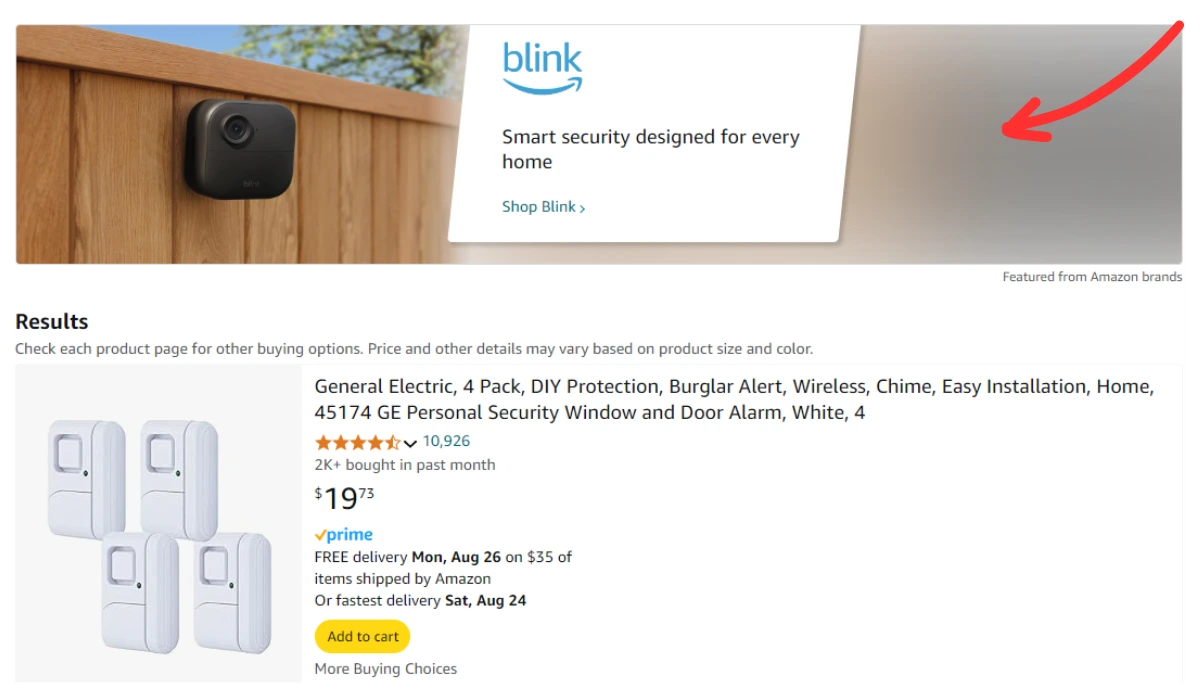
35. Sponsored Display Ads
Sponsored display ads are a self-service display advertising solution on Amazon that features a brand’s products. Unlike Sponsored Products and Sponsored Brands ads, Sponsored Display ads don’t target keywords, but rather customers based on audience interests and purchasing behaviors. This type of ads can appear on product detail pages or search results pages on Amazon, and on third-party websites and apps, depending on your targeting strategy.
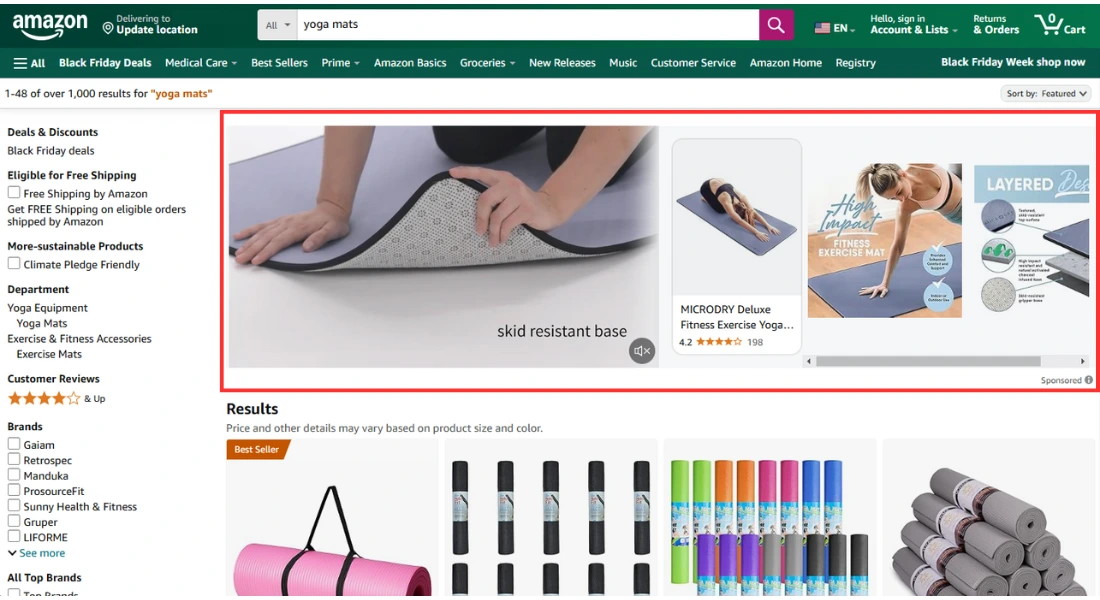
36. Target Advertising Cost of Sales (TACoS)
Target ACoS, or TACoS refers to advertising spend relative to total revenue generated, while including organic revenue. While ACoS utilizes only spend and revenue numbers that are directly related to advertising, TACoS includes organic revenue to apply a more holistic perspective to your promotional efforts.
You can also think of the target ACoS as your profit margin before advertising divided by target profit margin after advertising. This number will vary from seller-to-seller and determined by the various costs of making your product available.
37. Top of Search Impression Share
A metric that measures the percentage of top-of-search impressions a campaign receives out of the total top-of-search impressions it was eligible for. In other words, it measures the percentage of your ads that show at the very top of search results. This metric is available for Sponsored Brands and Sponsored Products campaigns on Amazon and can be used to evaluate the effectiveness of your PPC campaign.
38. Wasted Ad Spend
Any advertising money spent on keywords for a campaign that didn’t result in any conversions and profit.
Final Thoughts on Amazon PPC
As a seller, there’s a lot of terminology to remember and keep track of. However, the more time you spend in the Amazon space, the more familiar you’ll become with these terms. And as always, you can come back to this comprehensive glossary for a quick refresher before you plan and implement the next part of your PPC strategy. No matter where you are in your seller journey, Viral Launch is here to offer a number of solutions to help you and your business succeed!
Additional Resources
- Check out our ebook How to Start Selling on Amazon: 14 Key Steps for New Sellers for additional insights and tips on how to start your business the right way
- Enroll in our free course PPC Playbook: Success Made Easy to learn more about utilizing Amazon PPC and setting up campaigns








